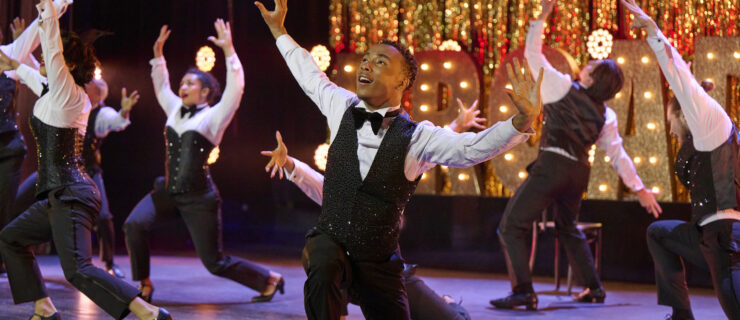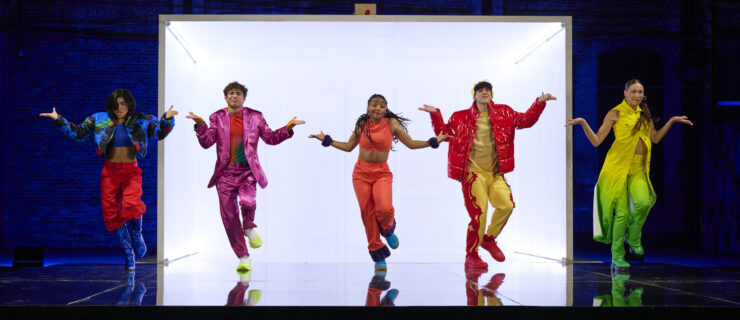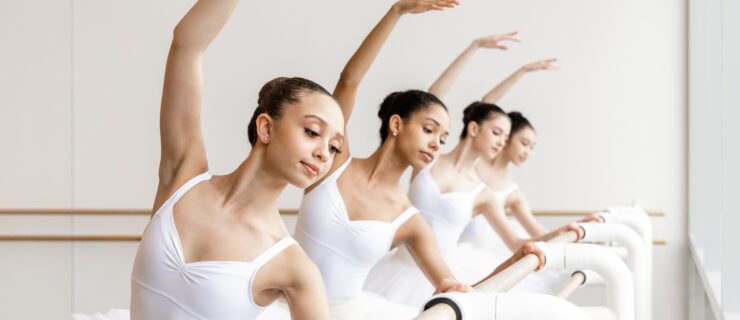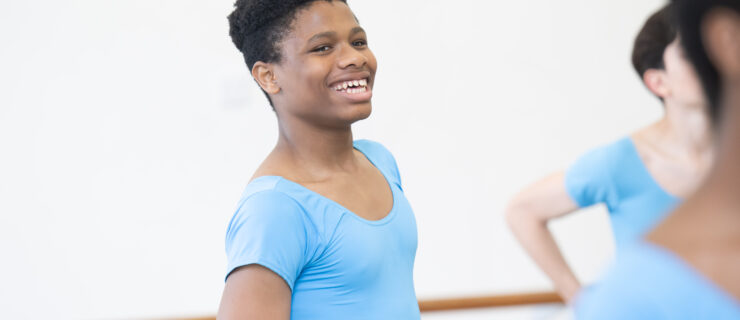Hip-Hop Dudes and Divas

Watch an old-school hip-hop video from the 1980s or ’90s—by Bel Biv DeVoe, Salt ‘N’ Pepa or Missy Elliot—and you’ll see aggressive, hard-hitting choreography. The guy dancers are tough, but the girls are too, wearing baggy sweats and attacking the movement in a masculine way. Back then, hip hop was clearly a man’s world.
Today, women in hip hop can still do head spins and freezes with the best of ’em, and they’re masters of popping, locking and breaking—styles originally developed by male dancers. But you’ll also find them dancing ultra-femininely in videos by artists like Beyoncé and Ciara. And it’s not just the ladies performing these sultry moves—the guys are doing them, too. The concept of gender in hip hop is evolving.
No doubt, strong opinions about how men and women should dance still exist. But dancers and choreographers are continuing to blur the boundaries in class and onstage, slowly reestablishing how each gender is perceived. The hip-hop genre is also blending with styles like street jazz and contemporary, so its borders are shifting, too. To handle today’s fluid hip-hop terrain, both guys and girls are learning to master diverse styles and to portray both genders. Dance Spirit spoke with hip-hop veterans to find out how and why the perception of gender in hip hop has evolved—and where it stands now.
Then and Now
Jonathan Lee, a hip-hop dancer and teacher, explains that in the past, hip-hop dance was predominantly masculine because of its origins. “Hip-hop music’s pioneers were men and the culture has been dominated by men,” he says. “The word B-boy suggests that.” Teresa Espinosa, a member of the Beat Freaks, adds that in the ’80s and ’90s this was especially apparent in dance circles and at battles. “In 1992, I was the lone female ranger in circles,” she says. Because of that, the girls had something to prove: that they were as good as the guys. And they did so by trying to fit in and doing what those guys were doing rather than creating their own stylistic movement.
However, this is only one of many opinions about the role gender played during hip hop’s early stages. Some vets think gender played less of a role than it does now. Dancing then was about the choreography, not about the dancer—so whether you were male or female didn’t matter, what mattered was that you could execute the moves you were given. “In some early hip-hop videos everybody did the same jazzy movements, which are now seen as more feminine,” says hip-hop teacher and choreographer Chuck Maldonado.
But today, we’ve entered an era in which new trails are being blazed. Guys and girls can dance femininely or get rough—anything goes. According to Brian Friedman, a teacher and choreographer, much of this has to do with the exploration of new hip-hop styles and choreography. “I don’t remember hip-hop dance being so gender-specific before,” he says. “Ganky (DS October 2009) helped to change that.” This ultra-fem, vogue-inspired style, which Friedman popularized, helped a whole new breed of dancer emerge, he says. These dancers, like Tucker Barkley, showcase both female (ganky) and male (hood) movements, which pointedly emphasize gender. “With artists like Lady Gaga making these styles mainstream, everybody’s doing it,” Friedman says. “Boys are learning how to dance sensually, and girls can perform either style.”
For Jermaine Browne, who teaches jazz/funk/hip hop at NYC’s Broadway Dance Center, this gender blend is also a response to the melding of musical genres that are associated with gender in subtle ways. “The movement has adjusted to include the harder, masculine hip-hop flair as well as R&B’s softer, more feminine musicality,” he says.
Luam Keflezgy, a teacher and choreographer in NYC, says regardless of the genre, the music’s vibe inspires her choreography and its gender references. “I do what the music says, period,” she explains. “I want my dancers to do the same.” So, ladies and gents, whether your choreographer wants you to do a variation of the running man to a Run D.M.C. song or swivel your hips to Lil’ Mama, make sure you can master the moves.
Becoming a Diverse Diva
Though the dance community has developed a more expansive view of gender, expectations for each sex still exist, and they can play a role during auditions. To help you navigate the hip-hop scene, becoming versatile and exploring what’s out there is essential. Take classes in different techniques and styles to prepare yourself for any audition combination, whether it’s a hair-tossing Pussycat Doll phrase or a section from a down-and-dirty Bubba Sparxxx song. “Do ganky, do hard hip hop, do smooth dancing—do it all,” Maldonado says. Plus, you can use your wardrobe to help you get into character. Throw on baggy sweats and a baseball cap to pull out your swagger for one class, then let your hair down and boogie down in heels for the next.
Once you’ve nailed different expressions of both genders and tons of techniques, you can draw upon them at auditions. But pay careful attention to what the artistic team asks for and make sure you’re not putting your own stylistic preferences—concerning gender or otherwise—above what the job calls for. Use thoughtful judgment to decide when to unleash your inner dude or thrashy girly girl, as well as when not to. And take note that a subtle double standard exists. “A girl should be able to dance girly and outshine a guy in a masculine routine,” says Rhapsody James, a hip-hop and street jazz choreographer. “But it doesn’t go the other way for guys.” Friedman says this means, in an audition, your best bet is to remember, “Unless an artistic team asks you to specifically cross the gender line, stay true to your sex.”
With the perception of gender constantly changing, it’s still difficult for dancers to navigate how to present themselves, how they’re perceived and how they want to be perceived. But if you’ve trained diligently and use your best judgment, you won’t need to worry. “At the end of the day, what’s hot is hot, and everyone recognizes that,” Keflezgy says.



